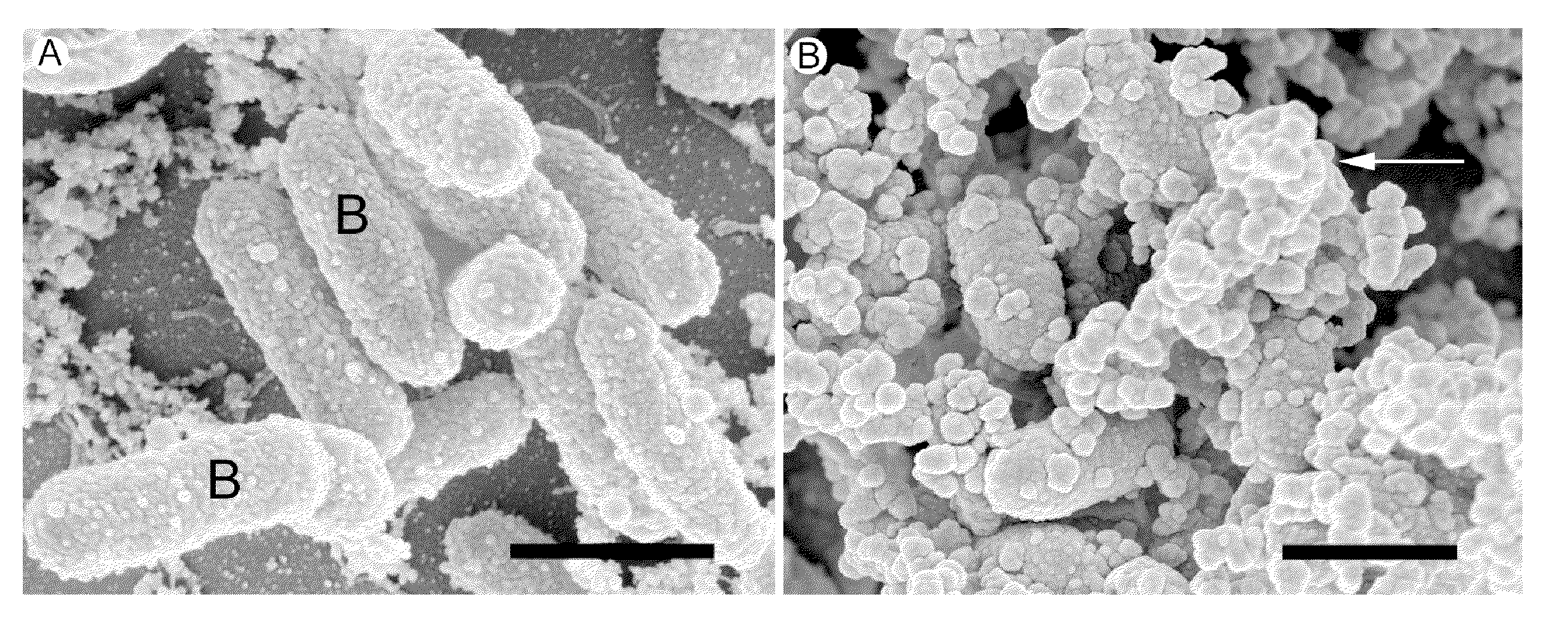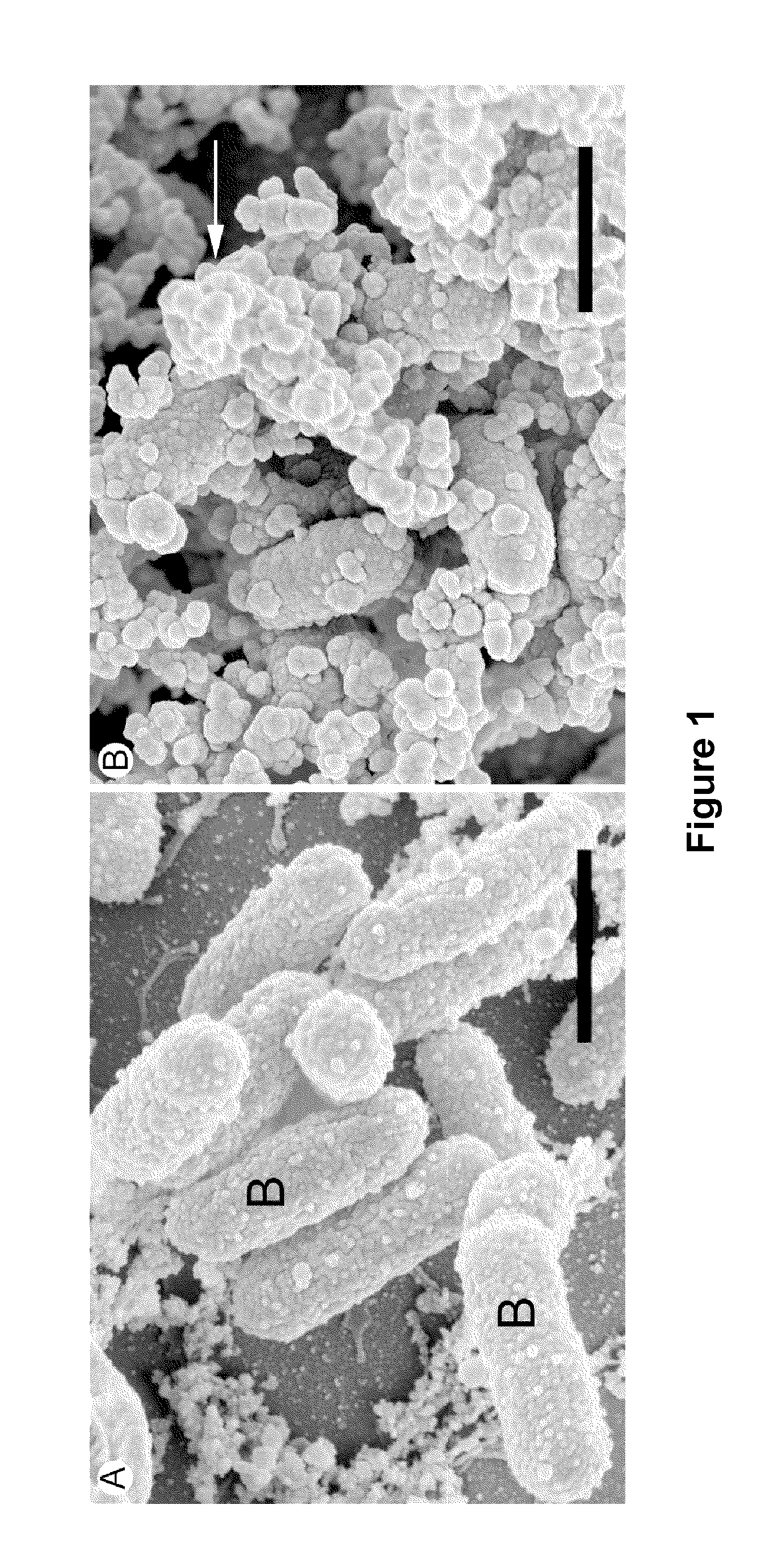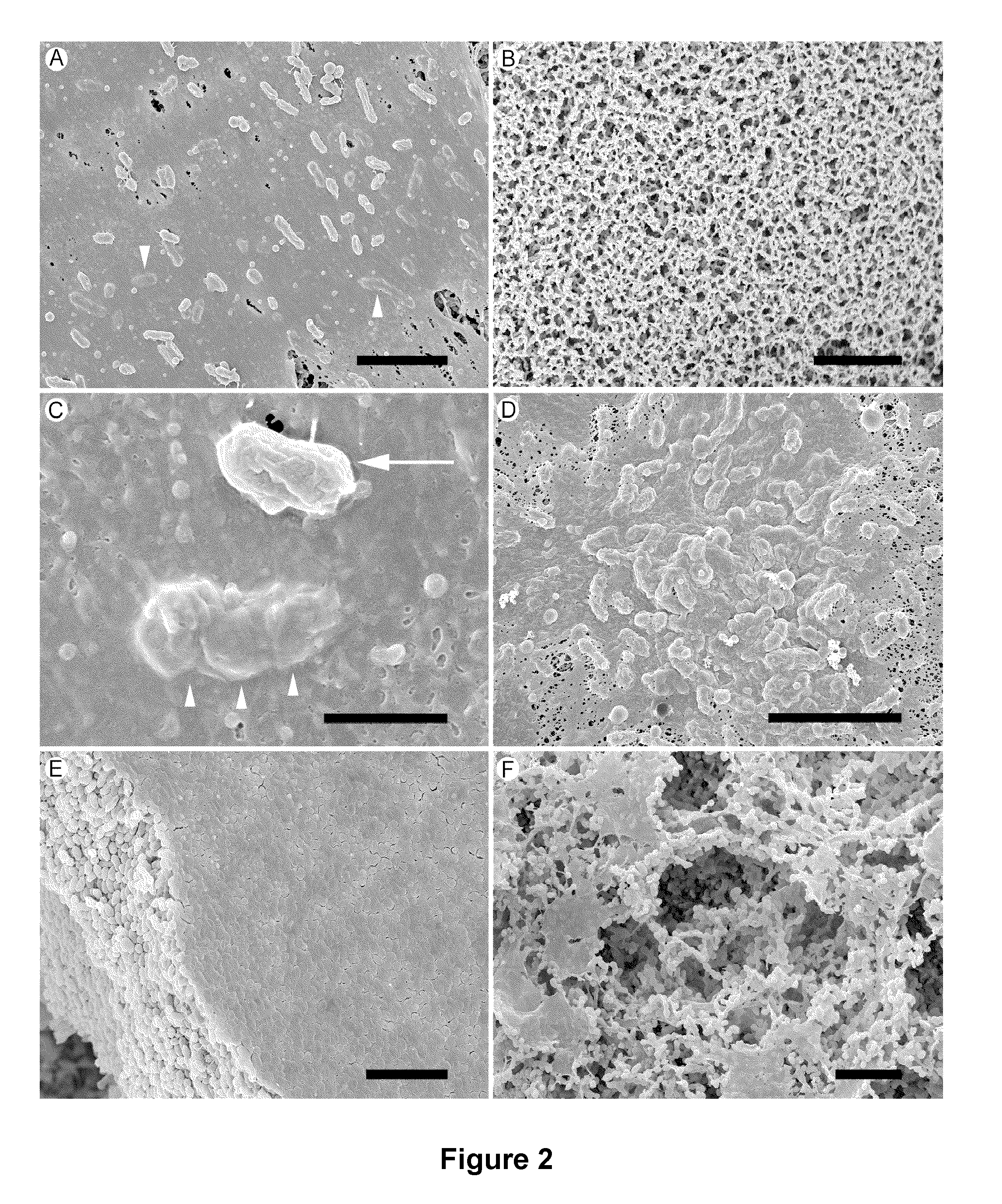Extracellular matrix proteins from haemophilus influenzae biofilms: targets for therapeutic or diagnostic use
a technology of extracellular matrix protein and haemophilus influenzae, which is applied in the direction of immunological disorders, drug compositions, peptides, etc., can solve the problems of inability to detect the presence of bacterial biofilms in the middle ear of om patients, difficult to solve, and inability to detect the presence of bacterial biofilms in the middle ear of patients, etc., to increase the susceptibility to asthma and increase the risk of asthma
- Summary
- Abstract
- Description
- Claims
- Application Information
AI Technical Summary
Benefits of technology
Problems solved by technology
Method used
Image
Examples
example
[0071]Biofilm-Specific Extracellular Matrix Proteins of Non-Typeable Haemophilus influenzae
[0072]Bacteria often proliferate as biofilms, embedded in a complex extracellular polymeric matrix (ECM). Non-typeable Haemophilus influenzae (NTHi) is a biofilm-forming organism that causes upper and lower respiratory tract infections such as otitis media, chronic sinus infections and COPD. In this study we examine proteins from the ECM of NTHi biofilms to determine if there are easily detectable, biofilm-specific proteins that could be used for NTHi biofilm diagnosis.
[0073]One- and four-day old NTHi biofilms contained bacterial cells enclosed in a thin layer of ECM. The ECM material could be separated from bacterial cells for analysis. NMR and FTIR analysis of the ECM detected polysaccharides and proteinaceous components. Eighteen biofilm-specific proteins were identified in the NTHi biofilm ECM using liquid chromatography-tandem mass spectroscopy. One protein was unique to 1-day biofilms, ...
PUM
| Property | Measurement | Unit |
|---|---|---|
| length | aaaaa | aaaaa |
| time | aaaaa | aaaaa |
| concentrations | aaaaa | aaaaa |
Abstract
Description
Claims
Application Information
 Login to View More
Login to View More - R&D
- Intellectual Property
- Life Sciences
- Materials
- Tech Scout
- Unparalleled Data Quality
- Higher Quality Content
- 60% Fewer Hallucinations
Browse by: Latest US Patents, China's latest patents, Technical Efficacy Thesaurus, Application Domain, Technology Topic, Popular Technical Reports.
© 2025 PatSnap. All rights reserved.Legal|Privacy policy|Modern Slavery Act Transparency Statement|Sitemap|About US| Contact US: help@patsnap.com



